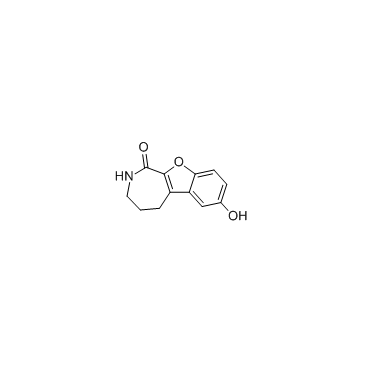Estrogen regulates histone deacetylases to prevent cardiac hypertrophy.
Ali Pedram, Mahnaz Razandi, Ramesh Narayanan, James T Dalton, Timothy A McKinsey, Ellis R Levin
Index: Mol. Biol. Cell 24 , 3805-18, (2013)
Full Text: HTML
Abstract
The development and progression of cardiac hypertrophy often leads to heart failure and death, and important modulators of hypertrophy include the histone deacetylase proteins (HDACs). Estrogen inhibits cardiac hypertrophy and progression in animal models and humans. We therefore investigated the influence of 17-β-estradiol on the production, localization, and functions of prohypertrophic (class I) and antihypertrophic (class II) HDACs in cultured neonatal rat cardiomyocytes. 17-β-Estradiol or estrogen receptor β agonists dipropylnitrile and β-LGND2 comparably suppressed angiotensin II-induced HDAC2 (class I) production, HDAC-activating phosphorylation, and the resulting prohypertrophic mRNA expression. In contrast, estrogenic compounds derepressed the opposite effects of angiotensin II on the same parameters for HDAC4 and 5 (class II), resulting in retention of these deacetylases in the nucleus to inhibit hypertrophic gene expression. Key aspects were confirmed in vivo from the hearts of wild-type but not estrogen receptor β (ERβ) gene-deleted mice administered angiotensin II and estrogenic compounds. Our results identify a novel dual regulation of cardiomyocyte HDACs, shown here for the antihypertrophic sex steroid acting at ERβ. This mechanism potentially supports using ERβ agonists as HDAC modulators to treat cardiac disease.
Related Compounds
| Structure | Name/CAS No. | Molecular Formula | Articles |
|---|---|---|---|
 |
CID755673
CAS:521937-07-5 |
C12H11NO3 |
|
Principles of branch dynamics governing shape characteristic...
2012-09-01 [Development 139(18) , 3442-55, (2012)] |
|
CID755673 enhances mitogenic signaling by phorbol esters, bo...
2010-01-01 [Biochem. Biophys. Res. Commun. 391 , 63-68, (2010)] |
|
Novel mechanism of cytokine-induced disruption of epithelial...
2013-10-01 [Tissue Barriers 1 , e25231, (2014)] |
|
Sphingomyelin synthases regulate protein trafficking and sec...
2011-01-01 [PLoS ONE 6 , e23644, (2011)] |
|
Protein kinase D1 maintains the epithelial phenotype by indu...
2012-01-01 [PLoS ONE 7 , e30459, (2012)] |